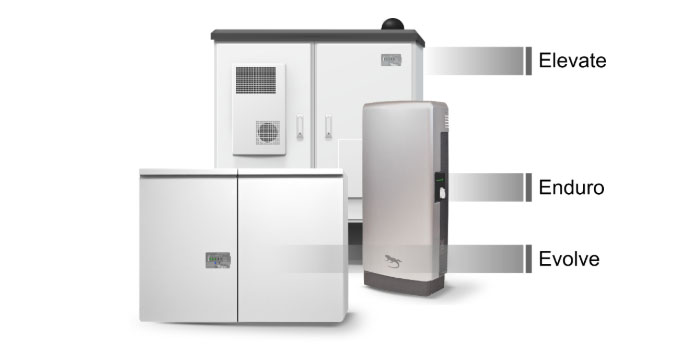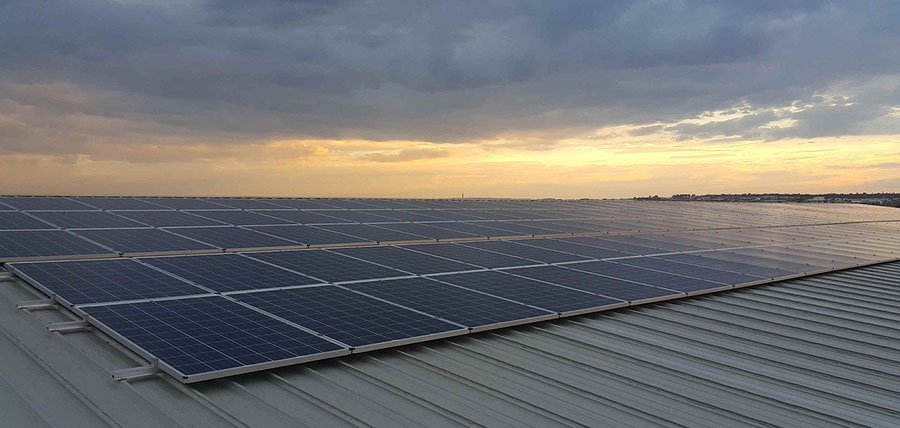TICKERS: , BX, ETX, JE, ORA, RPG, , WND
Renewable Energy Stocks that Deliver: John McIlveen
Interview
Source: George Mack of The Energy Report††(1/12/12)
 Retail and institutional traders invested record amounts in renewable energy producers in 2011, but separating the wheat from the chaff can be challenging. In this exclusive interview with The Energy Report, Jacob Securities' Senior Vice President for Research John McIlveen shares how to pick and choose. For steady dividends, high-yield Independent Power Producers deliver shareholder value, while renewable projects in the developing world offer incredible potential returns. Whatever the project, it's the internal rates of return that matter.
Retail and institutional traders invested record amounts in renewable energy producers in 2011, but separating the wheat from the chaff can be challenging. In this exclusive interview with The Energy Report, Jacob Securities' Senior Vice President for Research John McIlveen shares how to pick and choose. For steady dividends, high-yield Independent Power Producers deliver shareholder value, while renewable projects in the developing world offer incredible potential returns. Whatever the project, it's the internal rates of return that matter.
John McIlveen: Safety is still the dominant concern with small-cap companies, which are high-risk by definition. I mostly stick with power generators. High-yield Independent Power Producers (IPPs) returned over 20% in 2011, whereas manufacturing was slammed as many sectors entered cyclical lows. The generators have 20-year contracts, which provide highly predictable cash flow. To buy the manufacturers, you really have to understand the cycles.
TER: What's the relationship between conventional energy prices and renewable energy stocks? Do higher conventional energy prices trigger a bounce in renewables?
JM: Optimally, it would be better for renewables if conventional energy prices were higher. However, the reality is that renewable prices do not fluctuate with conventional energy prices because renewable power generators operate on long-term contracts with fixed prices. In the power business it is natural gas, not oil that sets the marginal price of power in the developed world. Low gas prices actually reduce prices on new renewable power contracts, but they do not affect an existing contract. Oil and diesel dominate power prices in the developing world, and because of this, power prices are two to four times the developed world prices. This is why we're seeing generators rush to the developing world. The generator can get twice the power price there and yet still save the host country 50%. There are much higher prices to be had for power in the developing world right now.
TER: Where would that be?
JM: Anywhere where oil or diesel are generating power. That would include most of the Caribbean and the Pacific islands. Even Hawaii is mostly on diesel.
TER: What's the most workable alternative energy technology right now that can deliver for investors?
JM: I don't see a surefire rocket ship growth story right now, but two technologies worth watching are algae and power storage. Algae consuming carbon dioxide (CO2) could be turned into a biofuel or a biomass, and it has the potential to be turned into human-grade protein. It has not been demonstrated on a large scale yet but if it works, it could supply us with clean fuel and power while consuming CO2.
Also, the lack of good power storage has held back many technologies for decades. A power storage system that could be sized to fit into a residential home and capable of storing a few kilowatts would enable a nationwide roof-top solar power system without new transmission lines.
TER: That sounds like the kind of thing that could take off in the developing world much the same way cellular telephone technology did in countries where there was no huge copper wire infrastructure in place. Is that fair to say?
JM: Yes, that would be completely applicable to the developing world as well.
TER: Which renewable energy technology could be the most profitable for investors and which the least?
JM: Once online, the generation method really does not matter. It's the project's internal rates of return (IRRs) that matter. Generally, investors should look for 10% or better unlevered IRR on a particular project. If investors are buying developers with little to no assets already online, then geothermal carries the most risk due to drilling, whereas solar carries the least risk due to its higher predictability and short installation time. However, having said that, geothermal stocks have been beaten up the worst of all these junior developers and may represent good value buys.
The biofuel area has some favorable political winds in its sails, as the biofuel volumes are mandated and increasing by 20% a year. However, there is still the double-ended commodity price risk, as you do not have the long-term contracts as you do in power production.
TER: I'm looking at an unweighted basket of conventional exploration and production (E&P) mid caps that were up nearly 19% over the last 52 weeks. I'm also looking at a basket of alternative energy stocks that were down 43% during the same period. What catalyst might induce a secular, upward movement in alternative energy shares?
JM: I think it's more broad-market based as opposed to being simply about alternative energy. The non-yielding IPPs were down 40% in 2011. Only one of them had a positive return, that one being Western Wind Energy Corp. (WND:TSX.V), which was up 24%. However, most of these have bounced off their one-year lows, and the market now looks like it is anticipating the resumption of upward movement in the small-cap sector. The market must come to believe large-cap stocks are fully valued, and there are signs now that this is happening, and some investors are now looking for bargains in small caps.
TER: You mentioned that Western Wind was up 24% in 2011. It's up more than 5% in just the first few days of 2012.
JM: Western Wind has been a unique story. It has brought 130 megawatts (MW) of wind online in 2011 without any equity dilution by using the investment tax credit (ITC) cash grants to secure bridge loans. It expects to add another 30 MW of solar the same way in 2012. There was also a $2.50/share takeover offer, which was withdrawn by the bidder after the huge stink that Western Wind put up. Now, there's a possible proxy battle looming by disgruntled shareholders who would've preferred to see the bid entertained further.
TER: Solar is a new business for Western Wind, isn't it?
JM: Yes. Up to this point, it had only 0.5 MW in operation. This new 30-MW project will be in Puerto Rico and should be online toward the end of 2012.
TER: Do you feel that's a good fit for the company to be in both solar and wind?
JM: Yes, I do. You could even put solar and geothermal on the same site, thereby saving on a lot of infrastructure and transmission costs.
TER: What other companies are you talking to investors about today?
JM: I like Ram Power Corp. (RPG:TSX), and we are rating it Speculative Buy with a $0.74 target price. It's just coming online with 36 MW of geothermal in Nicaragua. It will have another 36 MW in a year on the same site and could pay a dividend in 2013. So I think there is some good near-term potential to that one.
TER: Your implied return is more than 100%. After a tough year, the stock is up about 14% over the past four weeks. Are we looking at a turnaround?
JM: I think so, because all these junior developers now are show-me stocks. The market wants to see their projects come online on time, on budget and with cash flow. Once you see that, these values are going to move into these stocks very quickly.
Another is Etrion Corporation (ETX:TSX), which has 60 MW of ground-mount solar in Italy. However, it cannot pay a dividend now because its projects were 100% debt-financed. The stock is still too low to recapitalize, so I think what I'd like to see there is that it sell some assets at a good gain so that it can restart its growth.
TER: In your reports you refer to Etrion as a project company. Tell me more about that.
JM: It has about 10 different solar ground-mount projects, all of which it built over a two-year period. The company financed it all with debt; it didn't raise any equity. Because it has such a high-interest and debt-repayment schedule, it will not be able to pay a dividend, and I don't think it generates enough cash flow on its own to continue to grow. With the stock half what it was a year ago, I'm sure management doesn't want to issue any equity to fund growth. A good alternative for Etrion would probably be to sell one or some of its projects in order to finance growth.
We like Ormat Technologies Inc. (ORA:NYSE), a solid company with free cash flow to grow its megawatts by about 20%/year. But without a significant dividend, the market punished it in 2011. I expect the company to beat the Street in 2012.
TER: You reduced your target price on Ormat from $34 to $24. What was going on there?
JM: It had nothing to do with Ormat. I had actually increased my estimates a little bit at the same time when I did that. Essentially I'm going from a 15x enterprise value/earnings before interest, taxes, depreciation and amortization (EV/EBITDA) multiple, which was what a bull market pays for a high-growth power company, down to 12x EV/EBITDA, which is more of what a slow-growth or bear market would pay.
Another is Alterra Power Corp. (AXY:TSX). It is a solid company with geothermal, wind and hydro assets. It would benefit the most if small caps return to favor, but it will not be able to pay a dividend for a few years given its current expansion program.
TER: Back in November, you raised your rating on Alterra from a Hold to a Buy. What was the catalyst for that?
JM: Two things: the company had turned cash-flow-positive with the consolidation and acquisition of Plutonic Power Corp. just as the general market began to move the stock. Eventually, with their declines, they all move into a Buy-position. Our criterion for a small-cap stock is it has to have a 25% potential return to the target price to be a Buy.
I might also mention U.S. Geothermal Inc. (GTH:TSX; HTM:NYSE), the only geothermal company not to have stumbled over drill results in 2011. Progress has been plodding but mistake-free. I think U.S. Geothermal is a good value, and unlike the other geothermals, it has not yet bounced off its one-year low.
TER: You also follow Just Energy Group Inc. (JE:TSX) and you have a $15 target price on it, which represents about 40% upside potential from here. This company has a significant market cap compared to most of your coverage universe, and it has a very different business model as well.
JM: Just Energy Inc. is essentially a reseller of gas and electricity, but the company has a small and growing renewable energy component to its business such that when it resells electricity, you can buy green power and buy green credits. This small part of its business is growing quite rapidly.
In its gas markets, it has a very high turnover in its contracts because that market is very fear-driven. End-users are only likely to lock into a five-year gas contract if they fear gas prices are going to be rising, but that's certainly not the buzz we hear every time we read a newspaper. That part of the business is a little challenging.
Their electricity market is a little bit better because there is still upward pressure on electricity prices, and people are thus willing to lock into contracts. The company has made three good-sized acquisitions in the last few years and has levered up the balance sheet on the high side. The dividend here is yielding 11% in the market, but the market is worried that there might be a dividend cut.
TER: You have had some concerns about BIOX Corp. (BX:TSX), but the stock is up 120% over the past six months.
JM: I have some short-term concerns because the U.S. $1/gallon tax credit has expired. I think this is going to cause some short-term downward pressure on biofuel prices; however, because the volume mandates remain, it should correct later on in the year. I'd suggest watching for a technical bottom for an entry point.
TER: Do you think the U.S. tax credit could be renewed?
JM: I don't think the tax credit will be renewed. Given the current budget-cutting Congress we have, perhaps it will just be allowed to expire like so many other renewable incentives. As for the Environmental Protection Agency's volume mandates, Congress would actually have to take action to rescind the mandates, whereas in the case of the tax credit, Congress doesn't have to do anything, just let it expire. The volume mandates look to be here to stay.
TER: I have enjoyed speaking with you very much, John.
JM: Thank you.
Jacob Securities Senior Vice President for Research John McIlveen has been with the firm five years and has a total of 26 years experience in special-situations research and merchant banking. In 2004, he became Canada's first sell-side analyst to focus solely on renewable energy research and consistently has been ranked a top performer by Bloomberg on accuracy of estimates and returns. He is currently treasurer of the Canadian Geothermal Energy Association and a published academic with 15 papers, including his and coauthor Alan Rugman's 1985 best Canadian book-nominated Megafirms: Strategies for Canada's Multinationals.
Want to read more exclusive Energy Report interviews like this? Sign up for our free e-newsletter, and you'll learn when new articles have been published. To see a list of recent interviews with industry analysts and commentators, visit our Exclusive Interviews page.
DISCLOSURE:
1) George Mack of The Energy Report conducted this interview. He personally and/or his family own shares of the following companies mentioned in this interview: None.
2) The following companies mentioned in the interview are sponsors of The Energy Report: None. Streetwise Reports does not accept stock in exchange for services.
3) John McIlveen: I personally and/or my family own shares of the following companies mentioned in this interview: None. I personally and/or my family am paid by the following companies mentioned in this interview: None. I was not paid by Streetwise for participating in this story.



























































